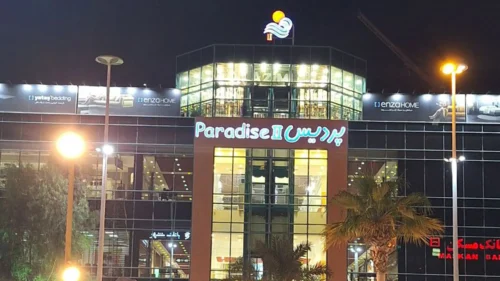
وبلاگ سپهران | Festivals | Ancient Iran Celebration Autumn
Ancient Iran Celebration Autumn, Most Magnificent Season
Autumn is considered one of the most magnificent ceremonial seasons of ancient Iranians. A season that, due to its mythological origin and weather conditions, has its own unique features. Our ancestors held special ceremonies, rituals, and customs throughout this dreamlike season, just as they did throughout the year. In this article, we will briefly discuss the three most important ancient Iranian festivals in autumn. Stay with us till the end of the article on the Sepehran blog.
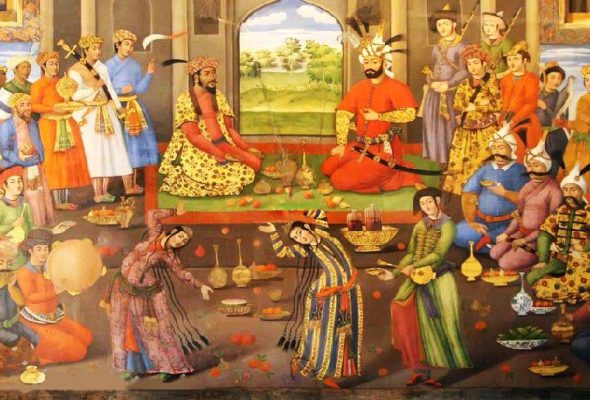
Historical documents confirm that until the end of the Achaemenid era, the new year started at the beginning of autumn. This choice was particularly intelligent due to the agriculture-based life, where the cultivation system started in early autumn and continued until the end of summer.
Even now, in some agricultural communities, especially in the northern regions of Iran and some parts of Kurdistan, the autumnal equinox is considered as the new year for cultivation, tax payment, and land share.
The coincidence of autumn with the beginning of the new year led to the first month of this season, which was also considered the first month of the year, being named after Mithra, or Mehr.
Therefore, during the Achaemenid period, the Mehregan festival, which was considered as Mithraic Nowruz, was held on the first day of Mehr month, referred to as the Mitracona festival.
Later, with the rise of the Sassanians, the Mithraic Nowruz was replaced by the ancient Nowruz, and thus, the Mehregan festival, instead of being held on the first day of Mehr, was held on the sixteenth day of the first month of autumn, like other ancient festivals. Although, in the Zoroastrian calendar, it is observed on the tenth of Mehr.
Festival Mehregan was not a one-day festival; it lasted for six days. For this reason, the sixteenth day of Mehr is considered important in both the ancient Iranian calendar and the Jalali calendar, either as the beginning or the end of the Mehregan festival.
Some of the most important beliefs attributed to this day include the start of Kaveh the Blacksmith’s uprising against Zahhak, the victory of Fereydun over Azi Dahaka (Zahhak), and the creation of rubies, etc.
are among the most important ancient Iranian festivals in autumn, which is still gloriously celebrated among our Zoroastrian compatriots.
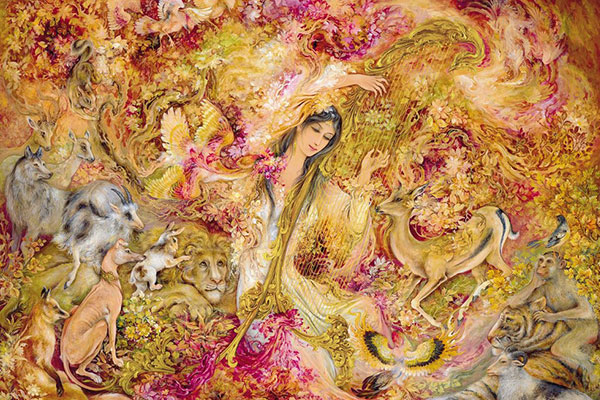
The Role of Water in the Joy of Iranian Festivals
Water is one of the sacred and ritual elements of Iranians.our ancestors have always held a special respect for it and always striving to keep running waters free from all kinds of pollutants. If the color, taste, or smell of the water changed, they considered it impure and did not use it for drinking or washing.
The sanctity of water was such that major and important Iranian temples and fire temples were built near water bodies.
This respect continued even after the Islamic period. Iranians, by building pools in the courtyards of mosques and Imamzadehs, cleverly tried to bring this pure and sacred element into their religious buildings.
In popular culture, water is also a symbol of brightness and fulfillment of needs. Therefore water is sprinkled behind a traveler so that his journey is safe and he returns quickly.
This belief that telling your pains and sorrows to running water reduces their intensity also stems from this sacred belief.
Zoroastrians, like other festivals, go to the fire temples on this day and after performing prayers, by going to the riversides, streams, and running rivers, they read parts of the Avesta called “Ab-Zohr” and request water and its preservation from Ahura Mazda, and then indulge in celebration and joy.
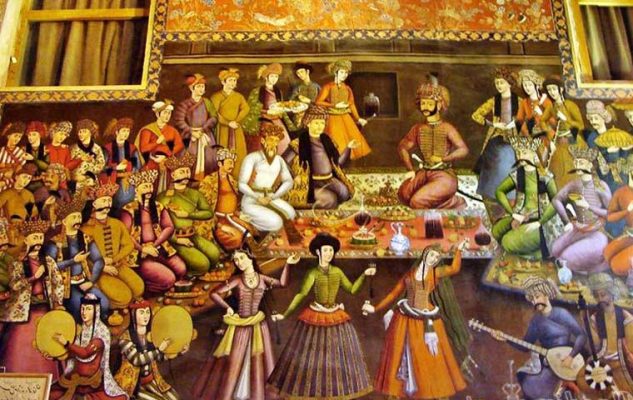
Festival Abangan is a festival in which women play a key role. One of the ancient customs of this festival is immersing in running water. It has been a tradition since ancient times that if it rains on this day, men were allowed to immerse in the water.
Otherwise, the rivers and running streams were the places for women to immerse. Various narratives have been stated about the Abangan festival and its formation in the mythical history of Iran. On this day, “Zu,” the son of Tahmaseb from the Pishdadian dynasty, defeated Afrasiab. He then drove the Turanians out of Iran and came to power.
He first orders the people to reconstruct the canals and rivers that Afrasiab had destroyed and cleanse the rivers from pollution. Abangan is also the day when the news of Zahhak’s captivity by Fereydun reached the seven countries.
Afterwards, the people, by the order of Fereydun, became the owners of everything that had been taken from them during Zahhak’s time. According to the narratives, after eight years of drought, heavy rain started to fall on this day. Since then, Abangan has been known as the water and rain festival in the ancient Iranian celebrations in autumn.
The ancient Iranians regarded the four elements with a sense of sanctity and respect. The importance of these four elements, especially in the Zoroastrian religious ceremonies, and their commitment to observing the dignity and respect of them, had a tangible manifestation in the life of ancient Iranians. Therefore, they continuously brought a collection of ceremonies into execution to remind of this status. The spiritual beauty of Iranian ceremonies becomes more attractive when we know that simultaneously and aligned with our ancestors, people were living in the farthest corners of the world.
Their sacred entities were idols; they either worshiped humans or elevated an animal to the level of divinity.
Whereas Iranians held the four natural elements, not in the position of praise (which is specific to God = Ahura Mazda) but in the position of respect and honor.
Natural elements that originated from the blessings and grace of Ahura Mazda and humans needed them critically for their lives. Therefore, they never polluted these four elements and managed their lives in a way that prevented the waste and pollution of them.

One of these sacred elements is fire, which has been mature and pure since its inception and serves as an alternative to the sun, illuminating the darkness and warming the cold, burning nights. An element whose production, containment, and management played a crucial role in improving the quality and quantity of human life and holds a special and valuable position in the evolution of human civilization.
We Iranians have been the pioneers and leaders of all human societies in honoring it. Therefore, part of this importance may be attributed to the cold climate and mountainous geography of Najd Iran (Iran Veej). The way of preserving and honoring each of these useful and sacred elements in ancient Iran has a specific and special manner, the description of which is detailed and extensive.
In the description of Iranian festivals, it is stated that: Iranians considered the coincidence of the month’s name with the day’s name as the criterion for holding a series of twelve festivals, each of which had a special and unique ceremony.
The Fire Festival (Azar) is also of the same kind and is held on the fire day of the fire month. According to the comparison of the Zoroastrian and solar calendars, it corresponds to the ninth day of the ninth month.
In Avestan beliefs, the importance of fire and light is so great that the guardian deity of fire is considered to be Ahura Mazda. This is a unique and special position that fire enjoys among the four elements. Therefore, to honor this position, the Azargan festival has been turned into a special and important celebration, the execution of which required its own customs and traditions.
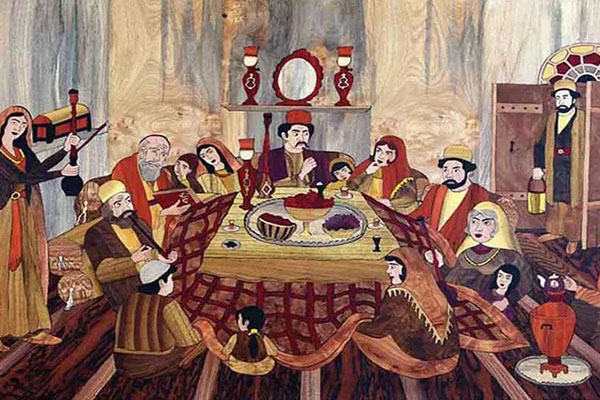
The only historical source we have about the way the Azargan festival was held is the references made by Abu Rayhan al-Biruni in ‘Al-Athar al-Baqiyah’. According to that, on this day, people would light fires outdoors, without a roof over their heads, and also on rooftops, and engage in prayer.
During this, they would throw well-burning and fragrant wood into the fire, which had a pleasant smell and was, of course, smokeless. Like all festivals, a tablecloth of autumn fruits and dried fruits was spread, and the family members gathered around it and celebrated. The main ceremony was held in the fire temples. After the prayer ceremony, people would each take a particle of fire home with them to benefit from its warmth and light to face the cold at the beginning of winter.
The extinguishing of the sacred fire in the houses was considered ominous by the people, and therefore, the household members preserved this fire until the end of winter.
The ancient Iranian festivals in autumn and other seasons each have their own special ceremonies, customs, and attractions that familiarize you with ancient Iran and its traditional ceremonies.
We have studied the most important festivals of ancient Iran in the fall. If you know another festival in the fall that we did not mention in this article, send it to us in the comments section.